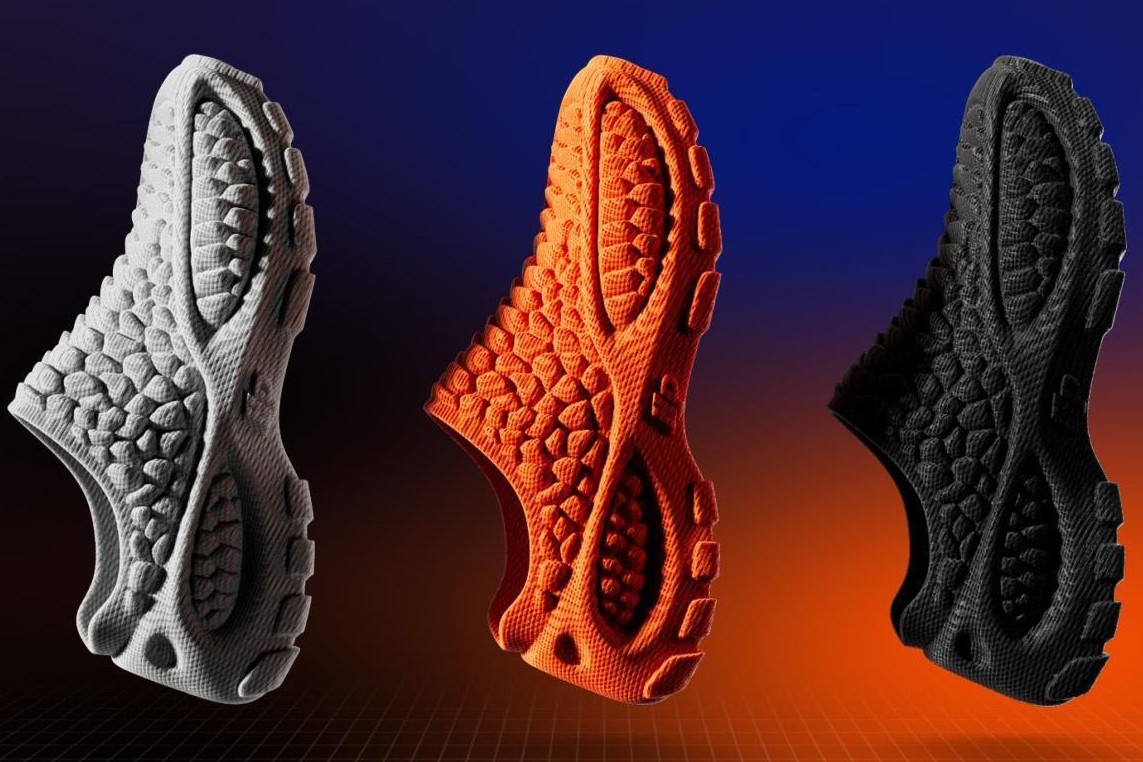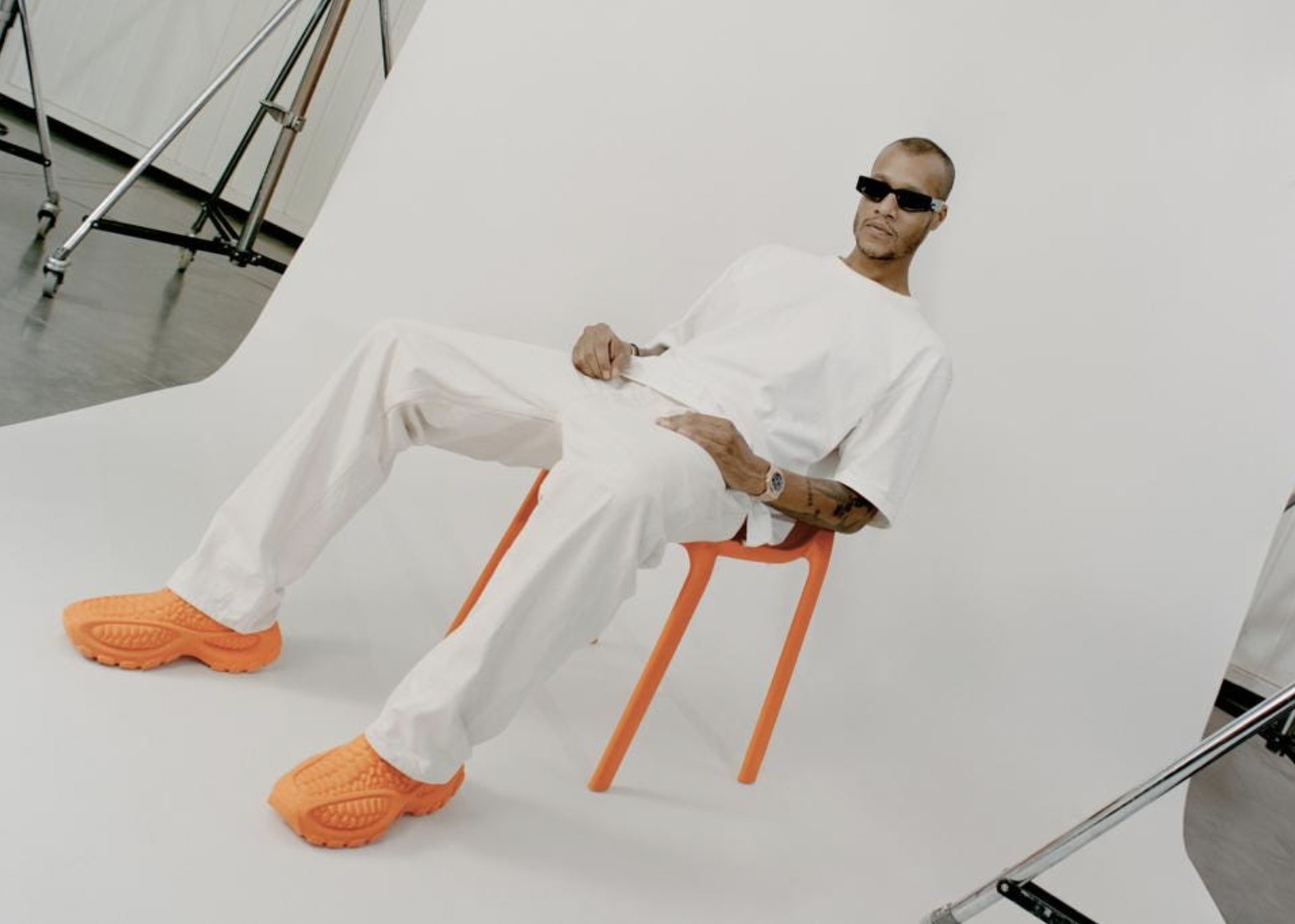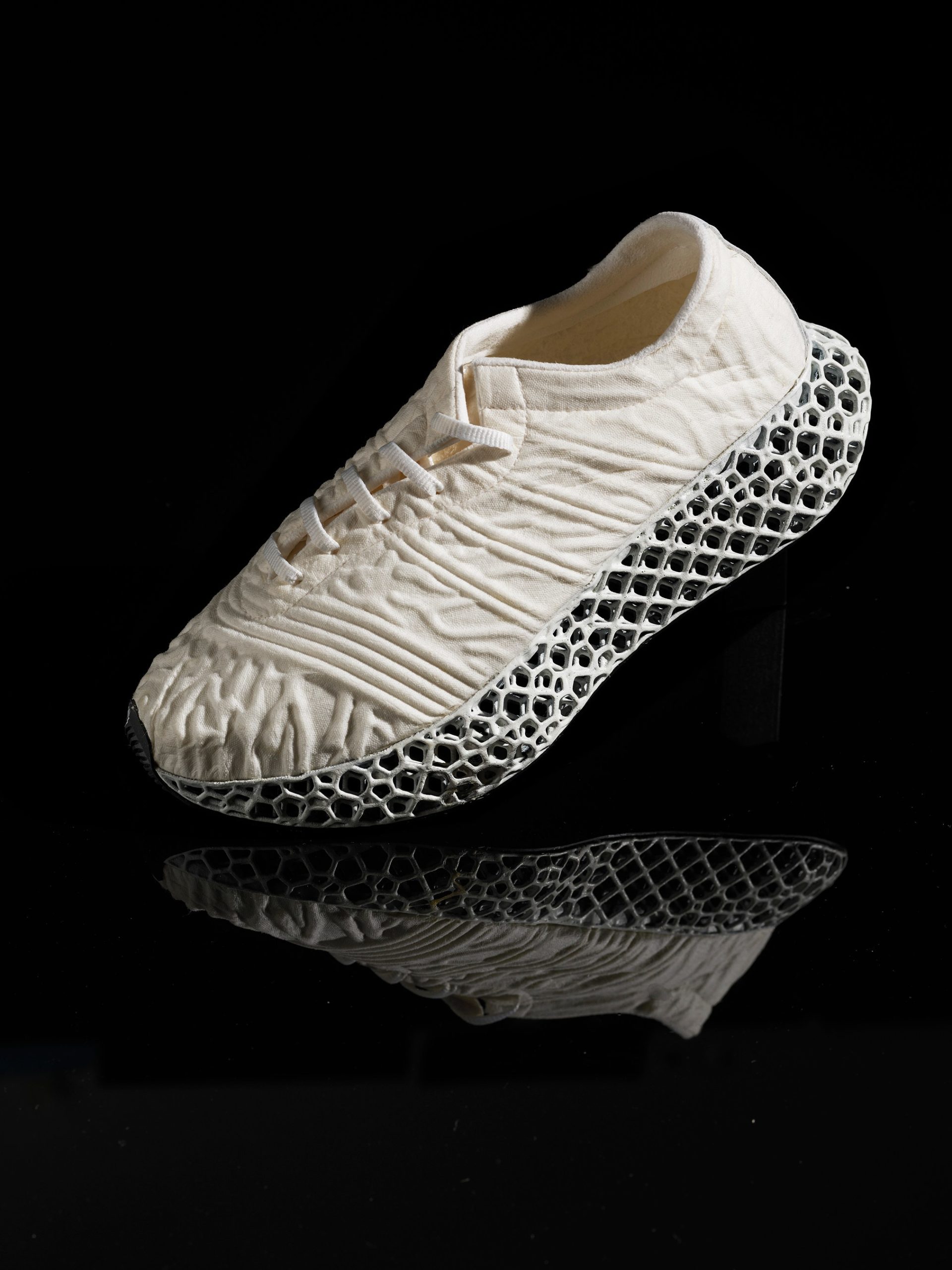Fashion designer Heron Preston and footwear 3D printing start-up Zellerfeld have released a new version of their co-designed 3D printed HERON01 sneaker, named Version 0.81.
The sneaker’s latest design and structure have reportedly been reimagined, with an improved collar shape, roomier toe box, and more lightweight feel due to reduced material usage.
Zellerfeld will be using the new version of the custom sneaker to update its footwear beta program in order to increase beta users’ access to its products.

The 3D printed HERON01
Preston and Zellerfeld began their partnership in October 2021 with the aim of 3D printing a unique sneaker line with the potential to “reshape footwear for the better.”
The two firms unveiled the HERON01 slip-on running shoe which features a seamless, circular design with no stitching or adhesives, meaning it can be fully recycled at the end of its life. A small number of pairs were sold via a StockX raffle, with Preston stating the small release was “just the beginning.”
The HERON01 is modeled to look like its namesake in the natural world, with its scale-like aesthetics designed to mimic those of a Heron’s feet while its sole features a claw-like design.
Zellerfeld uses 3D printing to develop experimental footwear with novel unibody designs, and markets its technology as a greener alternative to conventional footwear production processes.
Leveraging its technology, the firm has previously created a ‘Sneaker Zero’ design concept that placed third in the 2020 Formnext purmundus challenge, after working with fashion brand Querencia Studio to 3D print its first commercial footwear.

Version 0.81
Having evaluated the feedback from the initial beta tester, Preston and Zellerfeld have made a number of improvements to the sneaker’s fit, form, and function. As a result, Version 0.81 has an improved collar shape and roomier toe box that allows for an easier fit, while the upper is softer to avoid irritation when in contact with skin.
The sneaker has also been optimized further via Zellerfeld’s additive manufacturing technology to require less material usage and deliver a more lightweight feel. The shoe has also been designed with a higher heel inclination and improved arch support, while the midsole is now more supportive.
As with the original HERON01, customers have the option of choosing their standard shoe size or using a 3D scanner to fully personalize the fit of the shoe.
One of the benefits of leveraging 3D printing for the design and creation of the HERON01 is that the iterations could be done in a much smaller timeframe than traditional footwear design processes would have allowed. In turn, this allowed Preston and Zellerfeld to make a raft of changes to the sneaker without the usual high manufacturing costs associated with trial and error design techniques.
Zellerfeld will update its footwear beta program with Version 0.81, and plans to add beta testers to its process on a regular basis in order to receive more feedback on its designs. The firm is reportedly looking to expand its 3D printing capabilities to other forms of sports performance wear alongside its custom footwear.

Optimizing footwear with AM
3D printing’s inherent weight, design optimization, and personalization benefits have seen the technology increasingly deployed in the world of performance footwear in recent years. One of the more well-known examples is sportswear giant adidas, which has continually released new versions of its 3D printed Futurecraft ‘STRUNG’ sneaker with partner Carbon, and last year launched the latest iteration of its 4DFWD midsole to the public.
Elsewhere, cycle shoe producer Lore began taking preorders for its LoreOne carbon 3D printed footwear in July last year while digital manufacturing firm Voxel8 began 3D printing insoles en-masse for Hush Puppies’ range of designer footwear.
More recently, the benefits of cellulose have caught the eye of a number of 3D printed footwear start-ups for its potential as a natural, sustainable, and versatile replacement for a range of synthetic materials.
Last month, biomaterials start-up Modern Synthesis raised $4.1 million to develop its microbial weaving textile platform that allowed it to ‘grow’ a cellulose-based shoe using bacteria, while fashion designer Maria Intscher-Owrang’s new start-up Simplifyber secured $3.5 million to bring its biodegradable 3D printed cellulose-based garments and footwear to market.

Subscribe to the 3D Printing Industry newsletter for the latest news in additive manufacturing. You can also stay connected by following us on Twitter and liking us on Facebook.
Looking for a career in additive manufacturing? Visit 3D Printing Jobs for a selection of roles in the industry.
Subscribe to our YouTube channel for the latest 3D printing video shorts, reviews, and webinar replays.
Featured image shows the Heron01 features a scale-like design, similar to that of a Heron’s foot. Image via Zellerfeld.



